8 Longest-Flowering Houseplants For Spectacular Blooms All Year
Enjoy vibrant, long-lasting blooms indoors with these stunning houseplants that, grown together, will add color to your space throughout every month.
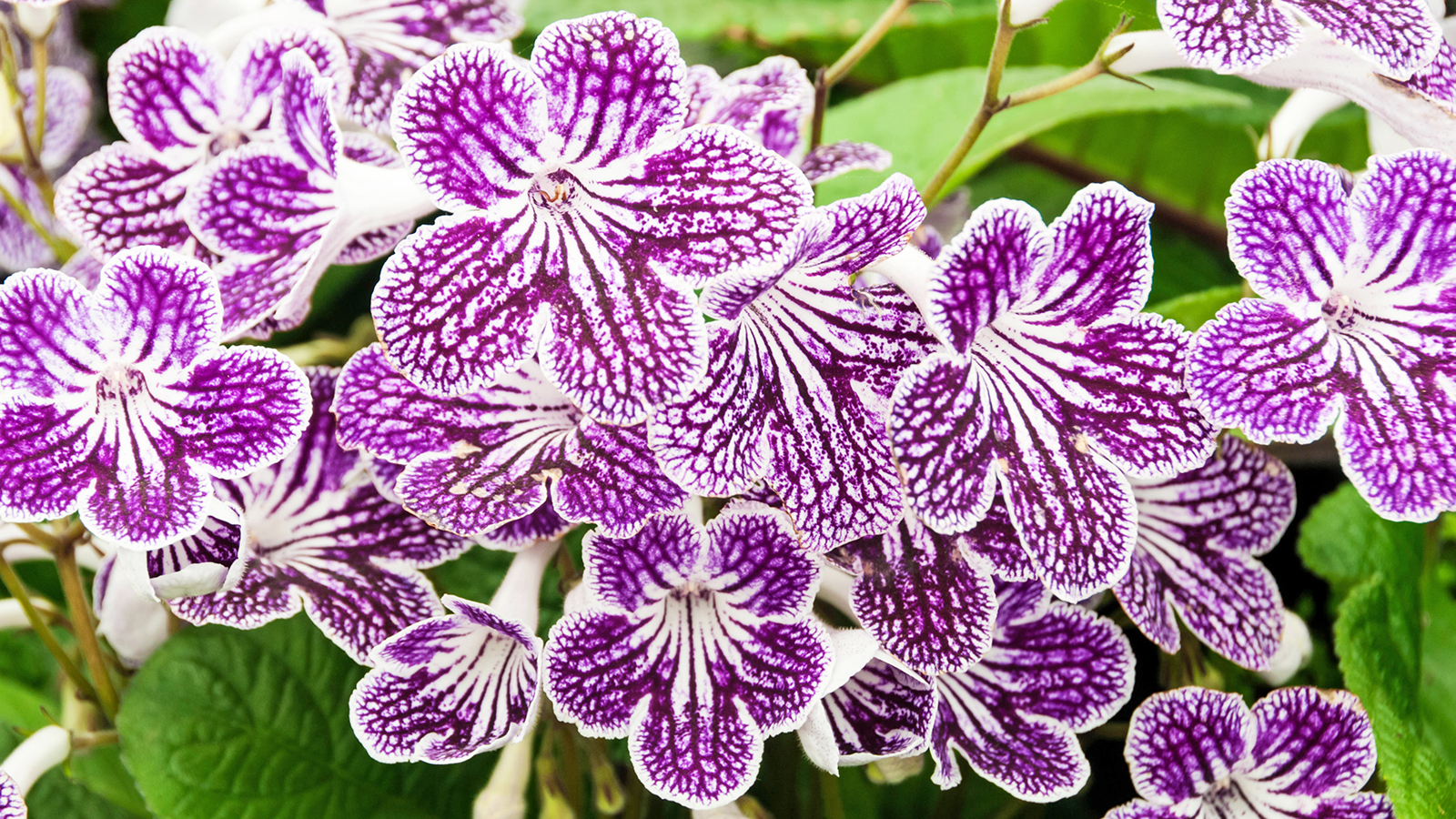

Cut flowers are nice in arrangements, but why not grow flowering houseplants that give you year-round blooms? Flowers add color and, in some cases, a beautiful fragrance to your houseplant collection. To get the best results for your efforts, choose species and varieties that bloom the longest or can be forced to flower regularly.
When given the right care, and when staggered to bloom in succession, these spectacular flowering houseplants will reward you with year-round blooms. Most indoor plants are native to tropical regions, which means they need warmth and humidity.
Good houseplant care involves placing these plants in warmer areas of the house, following their preference for direct or indirect light, and avoiding cold and dry drafts. You can raise humidity for houseplants by placing the pots on pebble trays filled with water, and by simply grouping plants together.
Brighten up your home for months on end with these stunning longest-flowering houseplants.
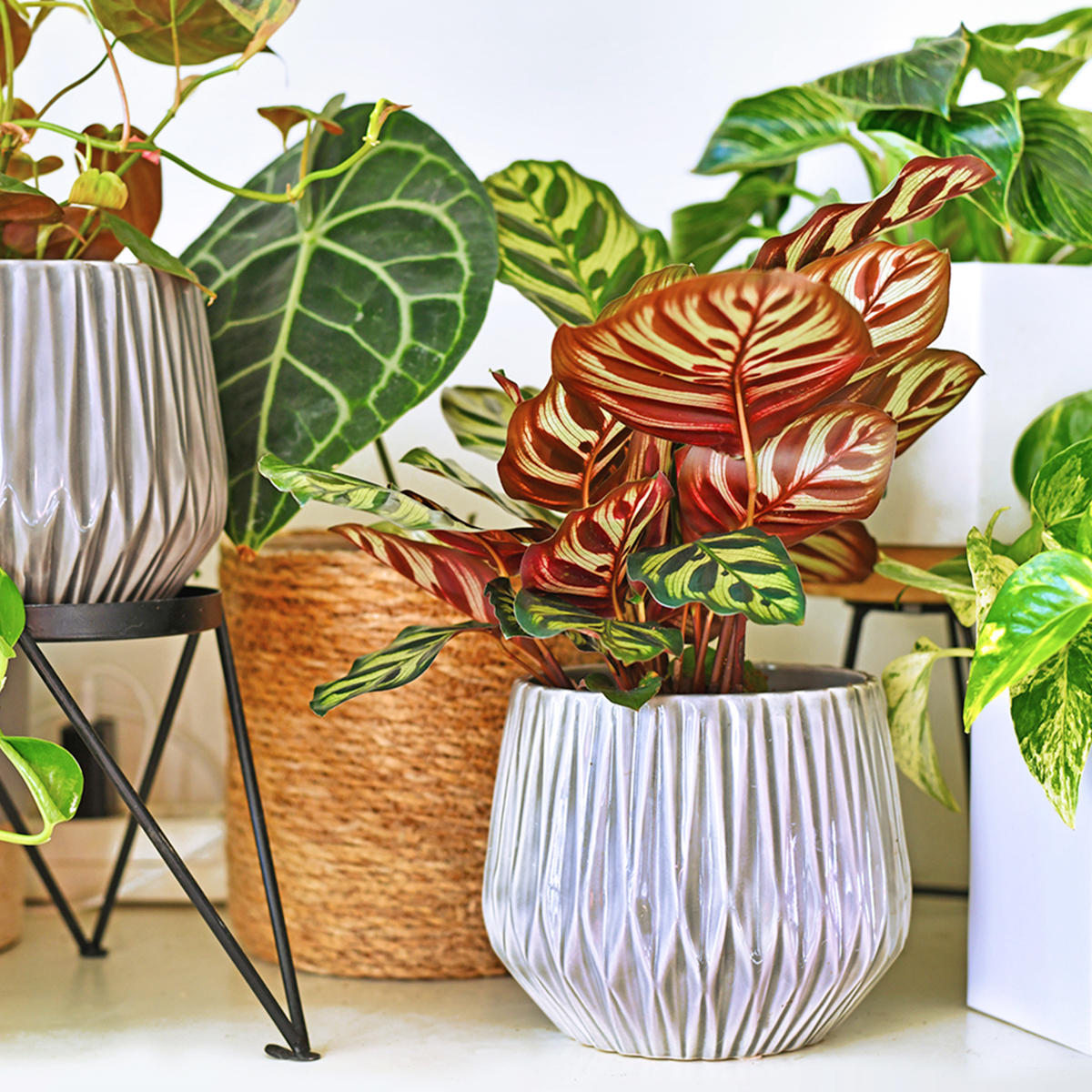
From self-watering pots that make caring for houseplants a breeze to beautiful centerpiece planters, the Shop is your go-to source of quality containers.
1. Anthurium
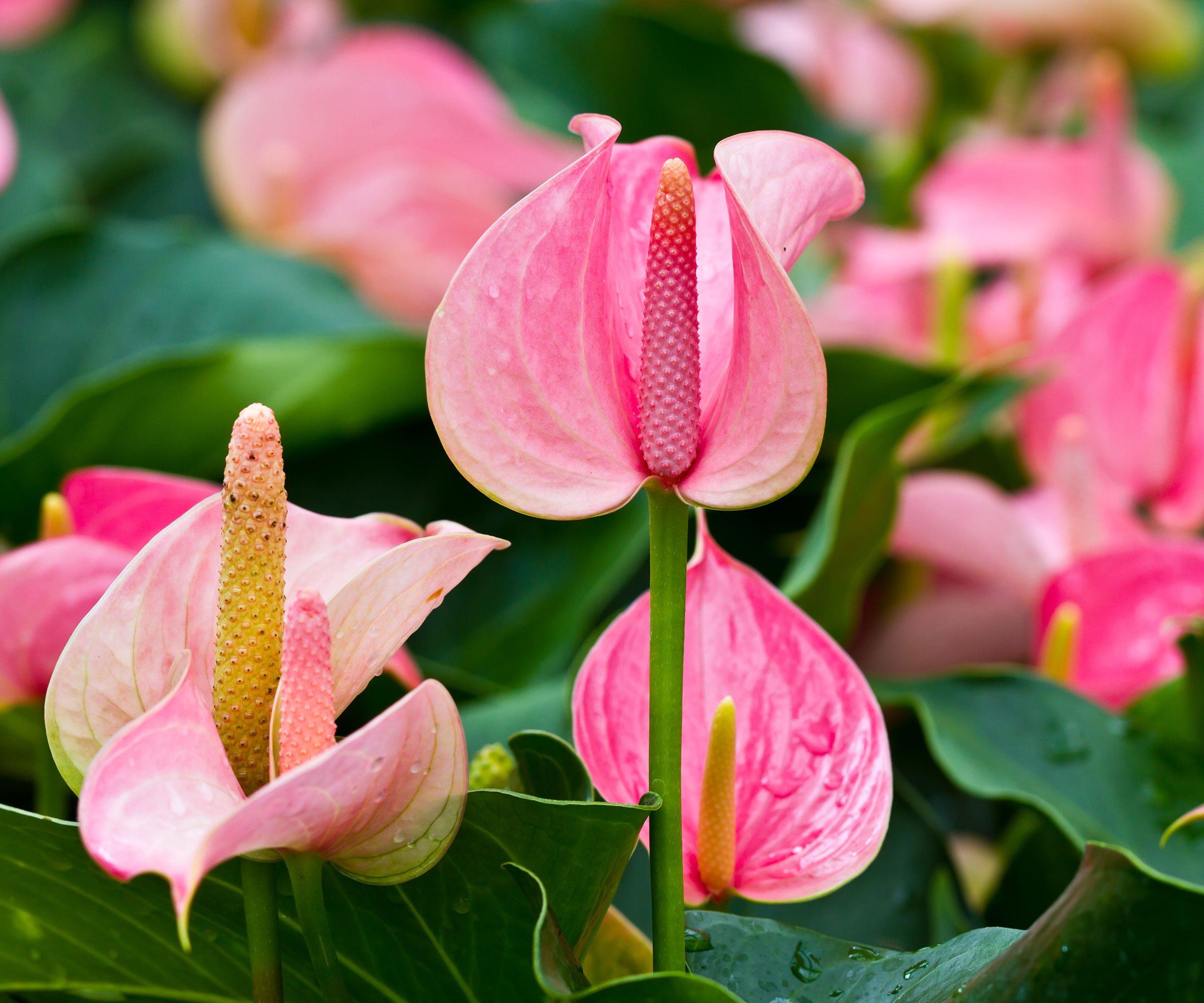
The striking flower anthurium (Anthurium andraeanum) produces is actually a spathe, which can be red, white, or pink. In bright, indirect light with warmth and humidity, anthurium, which is also known as the flamingo flower, will bloom nearly continuously.
Provide a balanced houseplant fertilizer regularly in the growing season to promote flowering and ensure the soil dries out a little between waterings to keep this houseplant happy.
2. African Violet
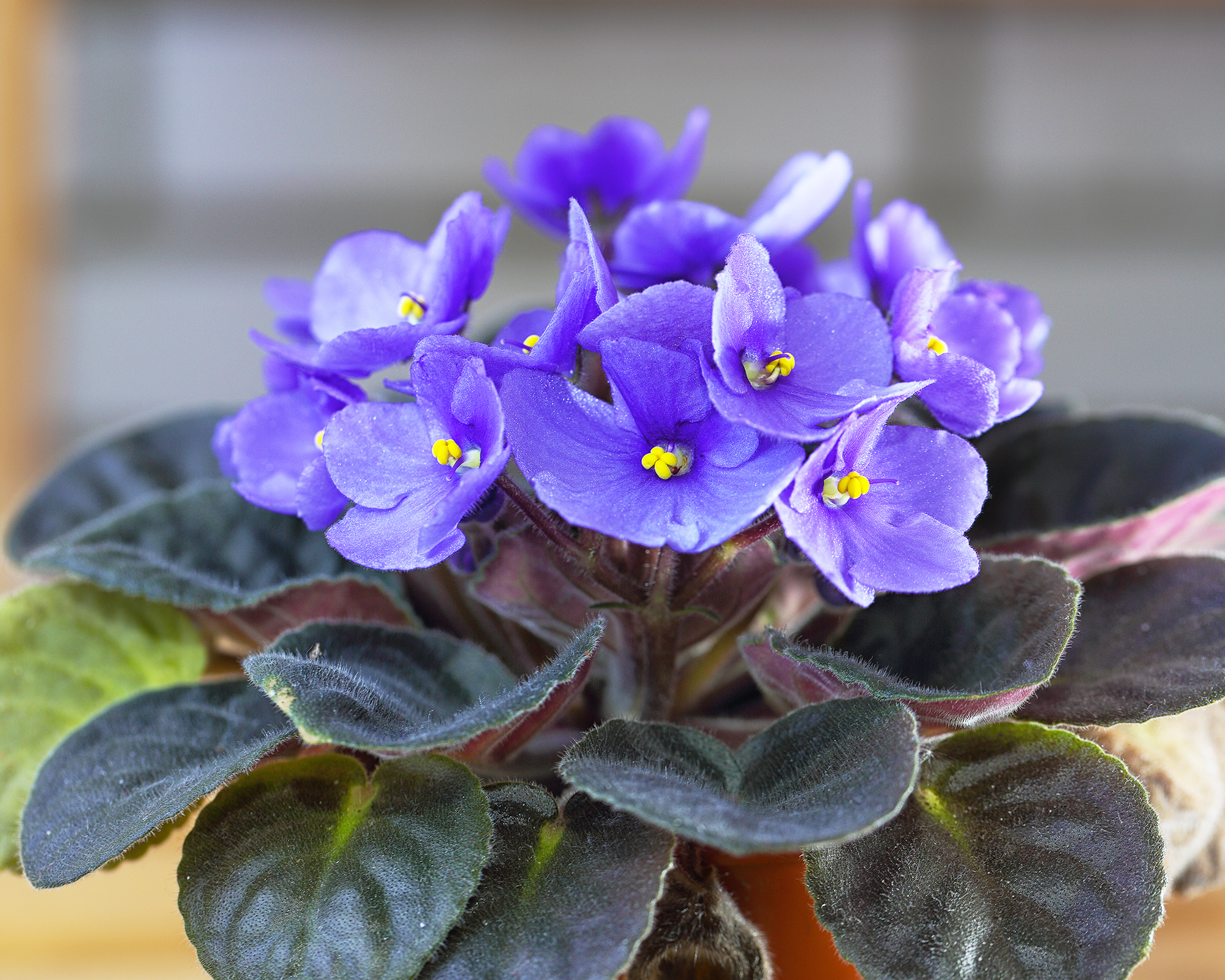
The African violet (Saintpaulia ionantha) is one of the most popular houseplants, prized for its compact form, fascinating hairy leaves, and abundance of small flowers. With the right care, they can be urged to bloom all year or most of the year.
Gardening tips, videos, info and more delivered right to your inbox!
Sign up for the Gardening Know How newsletter today and receive a free copy of our e-book "How to Grow Delicious Tomatoes".
To flower, African violets need warm humid air and bright but indirect light. The soil should drain well and stay evenly moist. Just avoid getting the leaves wet when watering, as this can cause spots to form. Use a fertilizer specific to African violets every other week during the spring and summer.
3. Orchids
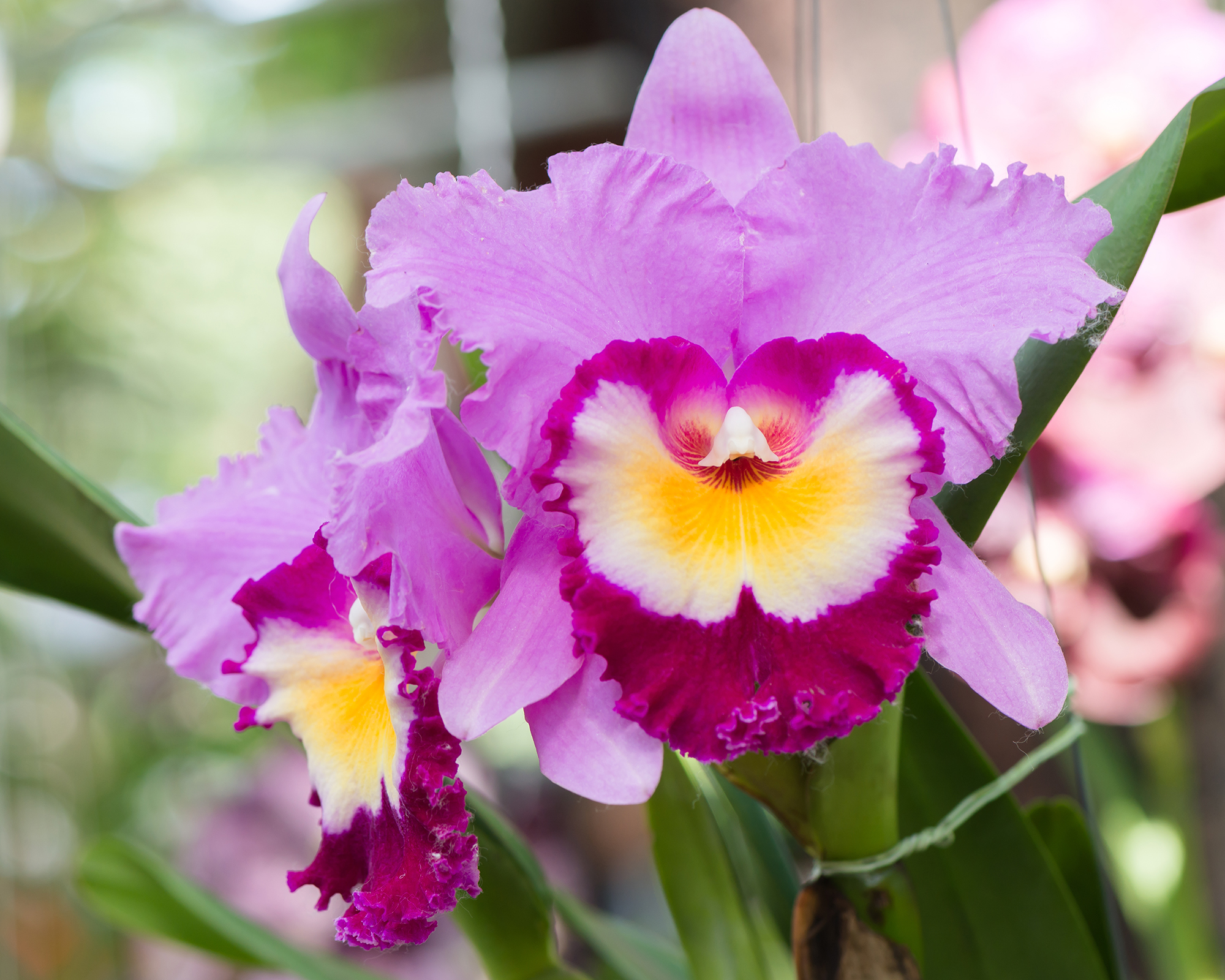
There are many genera and species of orchids. Those you’ll find most commonly as houseplants tend to bloom for weeks at a time and often two or three times per year. The types of orchids most likely to bloom more than once a year are oncidiums and cattleyas. Moth orchids – or phalaenopsis – are more common in stores. They naturally bloom once a year but can be coaxed to rebloom with good care.
Plenty of bright but indirect light is essential to get an orchid to rebloom. Keep them well watered but not soggy and use a potting mix designed for orchids. Use an orchid-specific fertilizer in spring and summer and stop feeding in winter to let the plant rest. This is important for later blooming.
4. Cyclamen
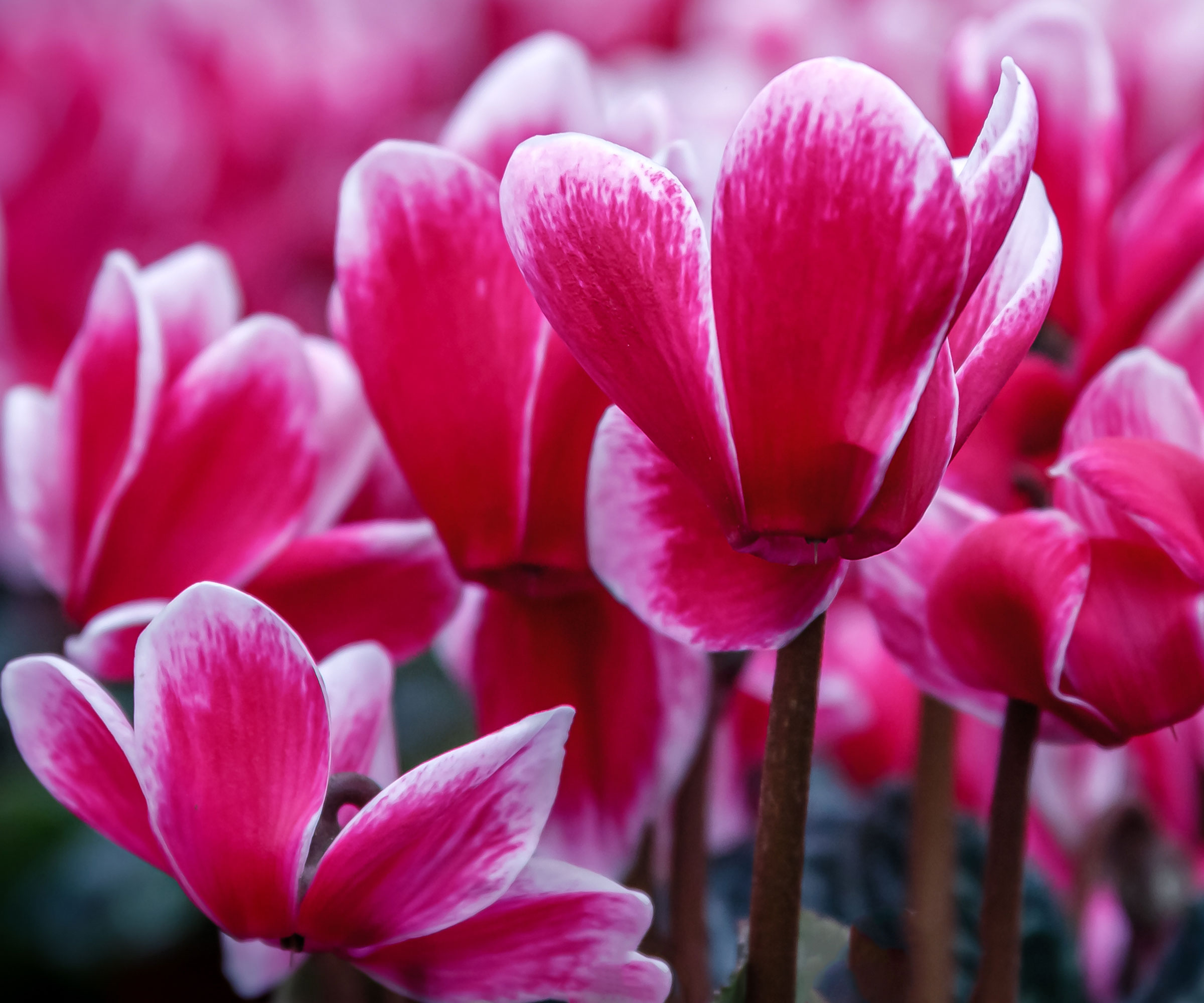
Stagger some of your summer-blooming houseplants with winter-flowering cyclamen (Cyclamen persicum). The blooms on these plants last up to eight weeks with the right care. Cyclamen flowers are fragrant and colorful, with pink, red, white, and purple varieties.
Give your cyclamen plant bright, indirect light, rich soil that drains well, and water when the soil is dry down to an inch or so. Mild temperatures and high humidity are best. Fertilize cyclamen during winter, when it is actively growing.
5. Begonia
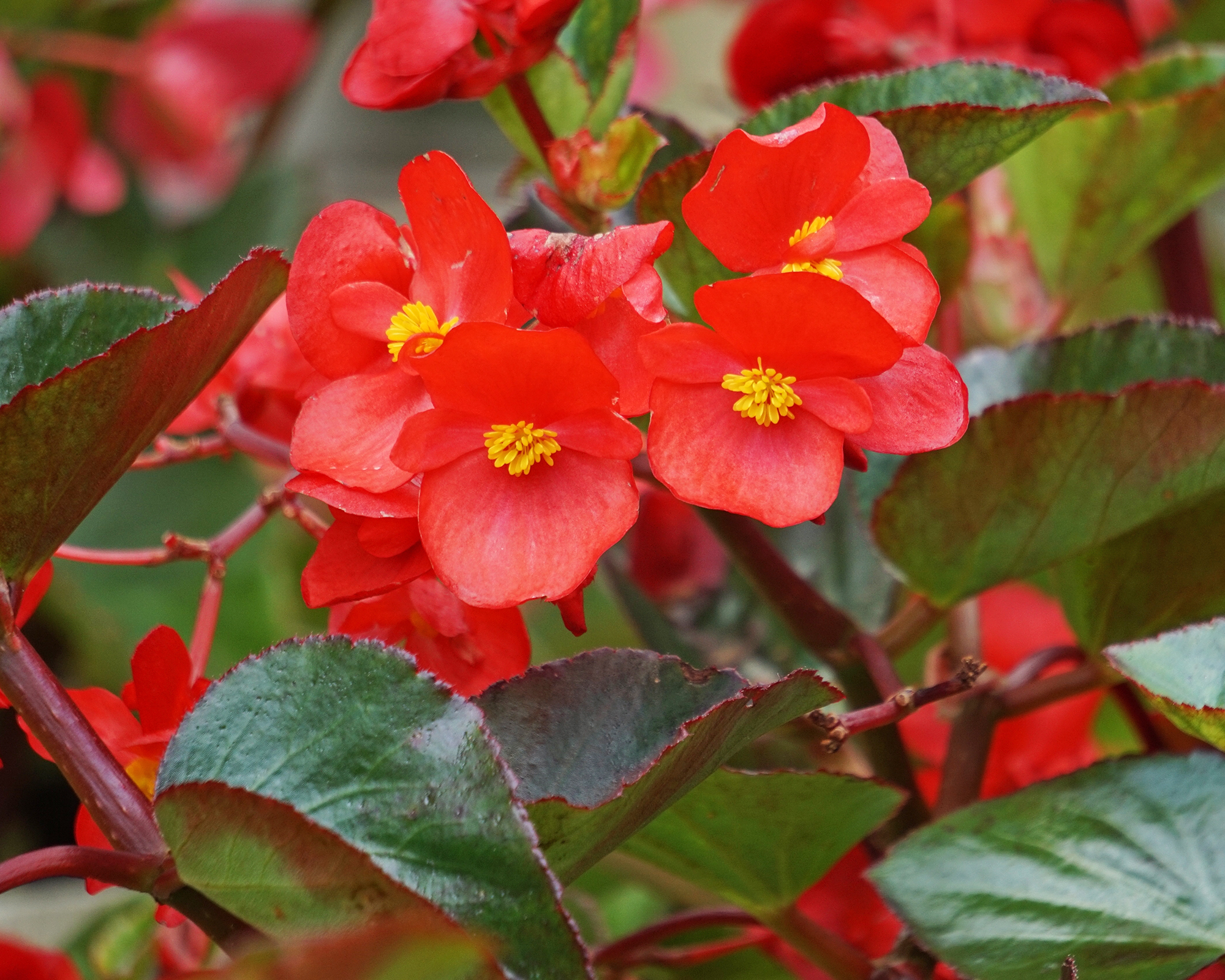
Begonias are often grown as annuals outdoors, but they also make good houseplants. Rieger and wax begonias are best for getting year-round blooms in shades of peach, yellow, red, pink, or white.
Give them bright, indirect light, keep the soil evenly moist, and place the plants in a location that is consistently warm. Use a balanced liquid fertilizer at half-strength in spring to promote flowers.
6. Cape Primrose
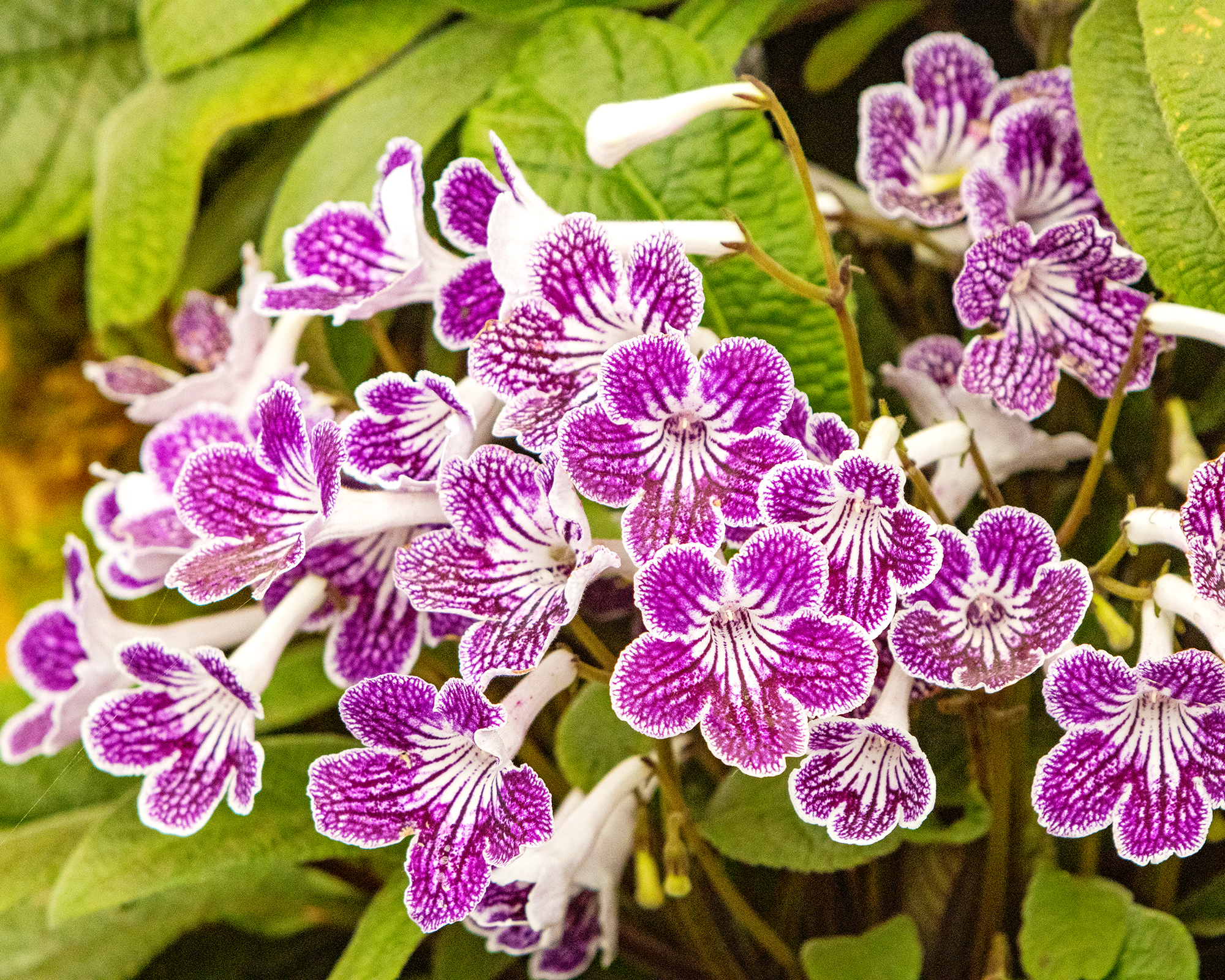
Cape primrose (Streptocarpus spp.) blooms reliably between May and October, but you can get it to flower even longer with the right care.
Enjoy the delicate pink, purple, or white flowers of this lesser-known houseplant by giving it bright, indirect light, well-drained soil, and regular deadheading. Use fertilizer from spring through fall to encourage ongoing flowering.
7. Kalanchoe

Unlike other species on this list, kalanchoe (Kalanchoe blossfeldiana) is a succulent and is native to drier climates. It has thick, scalloped leaves and produces clusters of cheerful little flowers in white, yellow, orange, red, or pink. It’s popular as a houseplant for its ability to rebloom over and over, for decades even. It’s also easy to care for.
To promote ongoing flowers on kalanchoe, give it bright, indirect light and soil that drains very well. Kalanchoe tolerates drought well, which means it doesn’t need to be watered often. Water it only every few weeks and even less in winter. Provide just a single, light application of fertilizer in spring. Kalanchoe is not a heavy feeder.
8. Crown of Thorns
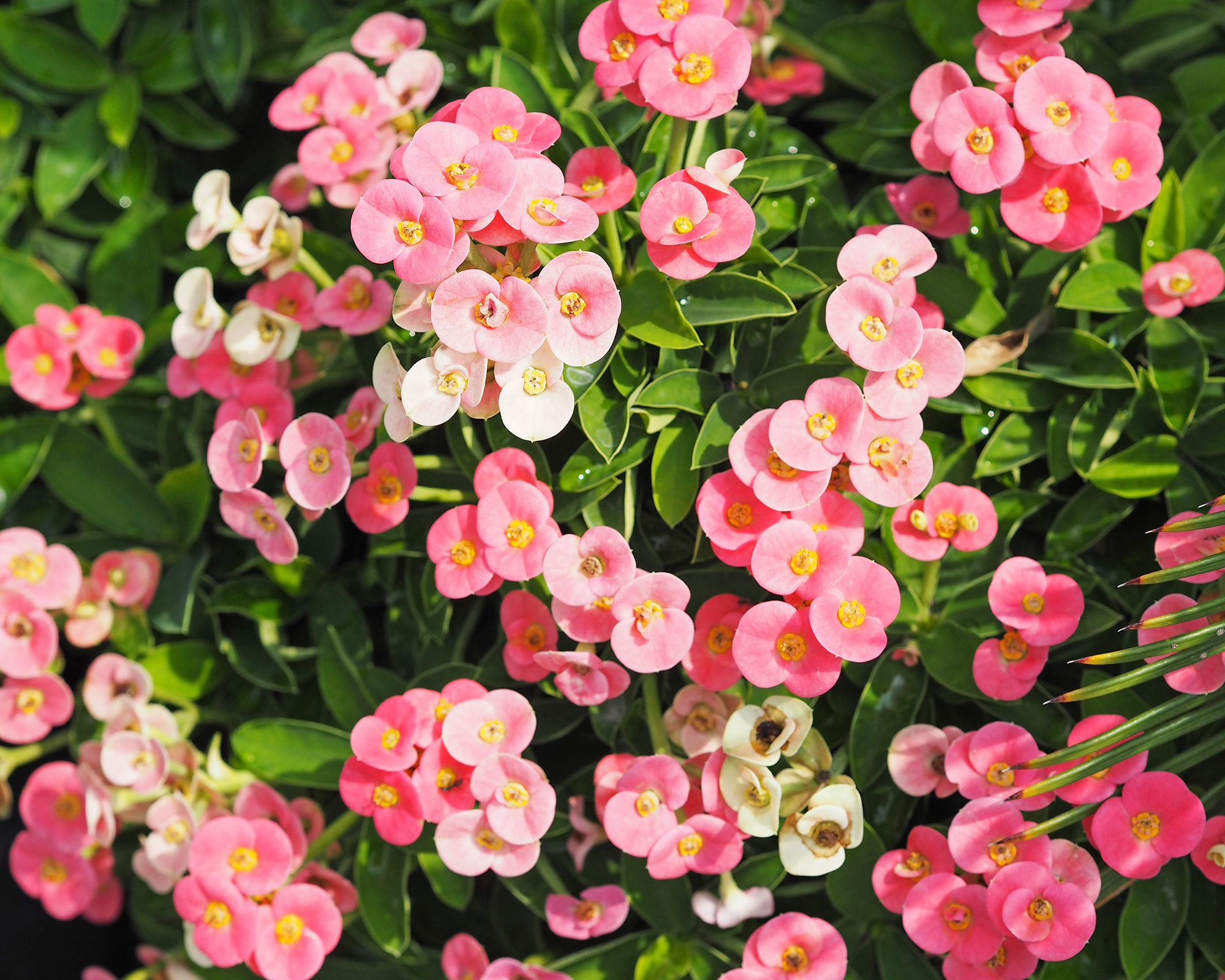
Crown of thorns (Euphorbia milii) is similar to kalanchoe and comes from the same dry areas of Africa. It has thorny stems and clusters of small flowers that come in many shades. It can grow quite large in its native range, but will remain manageable in a container and grow indoors.
Give crown of thorns a spot with bright and direct light and plenty of warmth. Light is particularly important for flowering with a crown of thorns. The soil should drain very well and the plant only needs to be watered when the soil is mostly dry. Use a balanced houseplant fertilizer throughout spring and fall.
Getting continuous flowers indoors is all about good care and pant selection. Create a mix of the right plants that will stagger their blooms or give you nearly continuous flowers and provide them with the conditions in which they thrive.
More Houseplant Inspiration
- Shop rare and unusual houseplants in the Gardening Know How Shop – all supplied in self-watering planters and selected for their ability to thrive in the home environment.
- Learn the 5 winter houseplant care mistakes you’re probably making, according to a horticulturist.
- Discover 8 enchanting terrarium plants that flourish all year long – for a fascinating and beautiful display.
- A rare houseplant expert shares 5 extraordinary, easy-care varieties to elevate your collection
- Find out the perfect houseplant combinations for every room in your home.

Mary Ellen Ellis has been gardening for over 20 years. With degrees in Chemistry and Biology, Mary Ellen's specialties are flowers, native plants, and herbs.
-
 Looking For Plants To Give You The Soft And Fuzzies? Try These 5 Fuzzy Leaf Plant Options
Looking For Plants To Give You The Soft And Fuzzies? Try These 5 Fuzzy Leaf Plant OptionsLovers of texture, drama, silver foliage and tactile plants will adore these special sensory garden additions. These fuzzy leaf plant options will leave you all aglow
By Susan Albert
-
 Get Ready For A Summer Of Hummers! Grow These Full Sun Hummingbird Plants and Flowers
Get Ready For A Summer Of Hummers! Grow These Full Sun Hummingbird Plants and FlowersIf you’re lucky enough to enjoy a sunny backyard, make sure you are maxing out on your pollinator opportunities and grow these full sun hummingbird plants and flowers
By Tonya Barnett